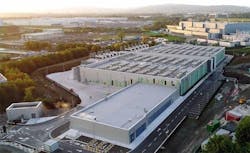Collaboration is Multiplication: Listening and Delivering What and Where Your Customer Needs Capacity
Perspectives vary on the process of meeting the needs of customers:
- “The customer is always right.” -Marshall Field, among others
- “If I asked my customers what they wanted, they would have said they wanted a faster horse.” -Henry Ford
- “People don't know what they want until you show it to them. Our task is to read things that are not yet on the page.” -Steve Jobs
But, in general, these approaches are likely to only work well when the customer is also a smart, thriving, tech-savvy company looking for services that will enable it to expand its reach and rapidly grow its product portfolio economically.
For data center providers, the key is understanding your customer’s unique needs. In our industry, a single customer can have multiple requirements that are very different and might sometimes seem almost contradictory. For example, a customer might need a hyperscale facility in Western Europe, an edge data center with room to expand in South America, a series of smaller far-edge premises across the U.S. and Canada, and multiple cable landing stations in the Asia-Pacific region.
This customer could rely on signing multiple contracts with different providers specializing in each design, construction, and operation type, possibly even building one or two of the data centers themselves. But a provider who can deliver all these categories of data centers in each of the required regions has a lot to offer a customer like the one in our example. Of course, it is not easy, and not everyone can do it successfully. But it is a crucial differentiator on several levels.
First, having experience designing and building different types of data centers makes it easier to collaborate with the customer. In the quotes above, the working assumption is that the consumer will see the product or service only after it is complete and on the market. For a data center provider, collaborating with a customer, starting at the earliest stages of the project means the resulting custom-built or build-to-suit facility can be designed to meet today’s needs while anticipating tomorrows. It can mean a more precisely suited location for the project, and more innovation in selecting materials and sustainability options. It can build trust and continuity across various projects. And it allows the provider and the customer to bring the best ideas from their individual experiences on earlier projects to help streamline everything from local relationships and proven supply chains to enlisting best-of-breed partners, security, networking, and more.
Next, it is crucial to understand that we are not talking about a one-size-fits-all data center provider. On the contrary, we’re talking about a provider who knows what these different categories of data centers have in common and how they differ. One who knows what efficiencies might be realized by applying some of the lessons learned from one category to a different deployment in smart, innovative ways. A cable landing station may be a relatively unique form factor. Still, the right provider will see how some types of innovations might be applied to a larger data center nowhere near any coastline.
And lastly, a key differentiator emerges when a data center provider has the kind of worldwide experience that allows it to treat global markets as local markets. On this point, it is important to recognize what these disparate markets have in common and how they might differ. A successful sustainability strategy in Phoenix may not add value to Santiago or Jakarta. Optimal materials and cooling strategies can vary widely in markets that may not appear far apart geographically. Local and national laws, municipal approvals, and community expectations may share little in common. But it will take more than these differences to throw a global data center provider off its game. And while there can be a lot of shared solutions across markets, there is tremendous value in knowing how to deliver results in diverse locations, cultures, and communities.
For data center customers, it boils down to a matter of trust. Are they willing to collaborate with their data center provider? Are they taking a micro or macro, wide-angle approach to their data center solution? Do they believe they will benefit from working with and learning from a provider with a proven track record of building fifty 100kW far edge solutions and 100MW hyperscale cloud hubs in markets around the globe?
For the data center provider, the key is ensuring you can deliver solutions that will help make your customer as successful as they deserve. The customer may not always be right but inspired collaboration and listening, matched with experience and innovation, can offer custom-built data center solutions that are the right form factors, at the correct scale, in the right places, ideally suited to their purpose, their surroundings, and their performance.
It has been said that collaboration is multiplication. But let’s close with a quote from someone who may be an unexpected source in a discussion of data center solutions: Amy Poehler, said: “Be open to collaboration. Other people and other people’s ideas are often better than your own. Find a group of people who challenge and inspire you, spend time with them, and it will change your life.”
Phillip Marangella is Chief Marketing and Product Officer of EdgeConneX, a global data center provider focused on driving innovation. Contact EdgeConneX to learn more about their data center design strategy.



